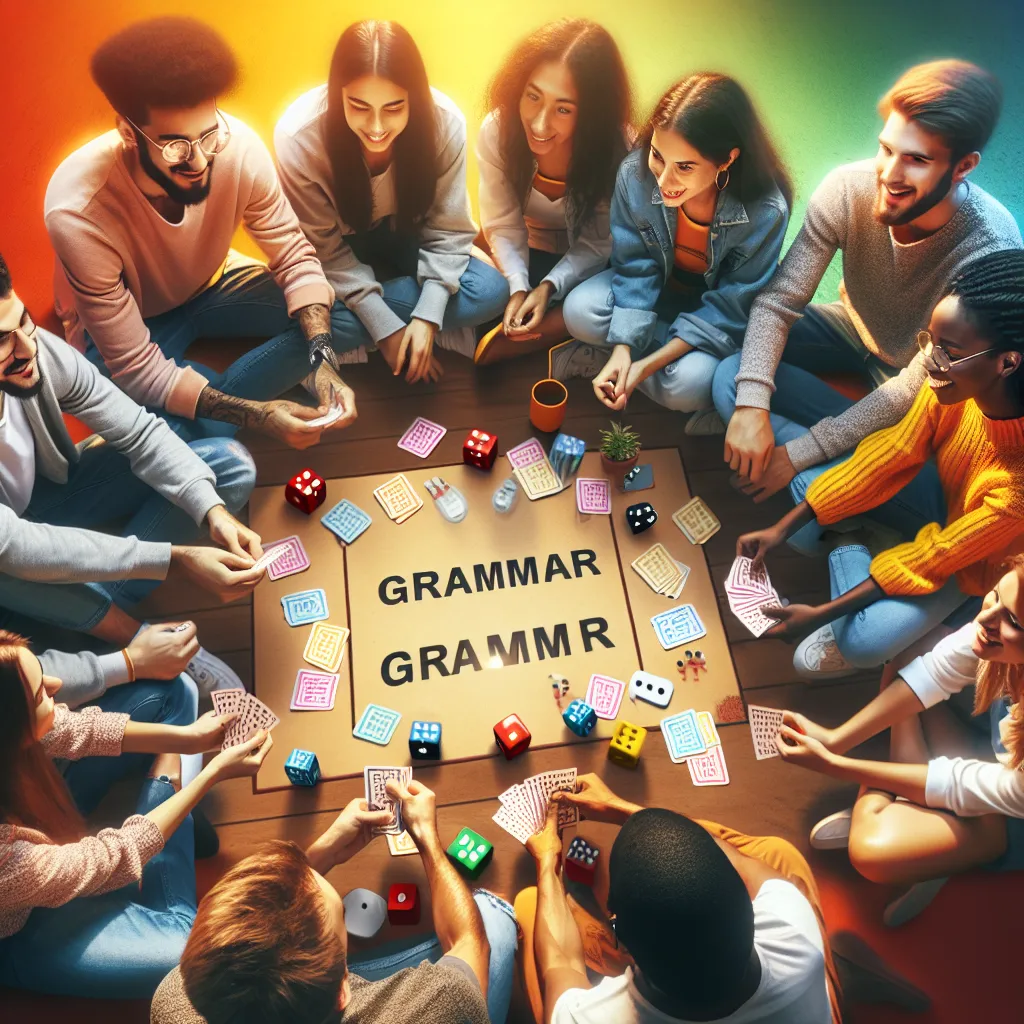Learning English grammar doesn’t have to be a tedious task. In fact, there are numerous enjoyable methods to enhance your grammatical skills while having fun. This article will explore various engaging activities that can make your grammar practice both effective and entertaining.
Why is Grammar Practice Important?
Before diving into the fun ways to practice English grammar, it’s crucial to understand why grammar is a fundamental aspect of language learning. Proper grammar enables clear communication, enhances writing skills, and boosts confidence in speaking English. It’s the framework that holds the language together, allowing you to express your thoughts accurately and effectively.
 Importance of English Grammar
Importance of English Grammar
Engaging Activities for Grammar Practice
1. Grammar Games and Apps
One of the most enjoyable ways to practice English grammar is through interactive games and applications. These digital tools combine learning with entertainment, making grammar practice feel less like work and more like play.
- Duolingo: This popular language learning app includes grammar lessons and exercises in a game-like format.
- Grammarly: While primarily a writing assistant, Grammarly offers explanations for corrections, helping you understand grammar rules in context.
- English Grammar in Use: Cambridge University Press offers an app version of their renowned grammar book, featuring interactive exercises and explanations.
These apps provide instant feedback, allowing you to learn from your mistakes immediately. They also often use spaced repetition techniques to help you retain information more effectively.
2. Reading for Grammar
Reading is an excellent way to absorb grammar structures naturally. Choose materials that interest you, such as novels, magazines, or graphic novels. As you read, pay attention to sentence structures, verb tenses, and word order. Here’s how to make reading a grammar-focused activity:
- Highlight unfamiliar grammatical structures
- Keep a notebook to jot down interesting sentences
- Try to identify different parts of speech in complex sentences
- Rewrite sentences in your own words, maintaining the original grammar structure
3. Grammar Through Music
Music is a powerful tool for language learning, including grammar practice. Many songs feature repetitive structures that can help reinforce grammatical patterns. Here’s how to use music for grammar practice:
- Choose songs with clear lyrics
- Print out the lyrics and underline grammatical structures you’re studying
- Sing along to practice pronunciation and internalize grammar patterns
- Try to change the tenses or pronouns in the lyrics as an exercise
For example, the song “If I Were a Boy” by Beyoncé is excellent for practicing the second conditional.
4. Grammar Challenges with Friends
Turn grammar practice into a social activity by organizing grammar challenges with friends or classmates. This can make learning more interactive and fun. Some ideas include:
- Grammar Scavenger Hunt: Create a list of grammatical structures to find in everyday life (e.g., a billboard using the present perfect tense)
- Sentence Building Game: Take turns adding words to create increasingly complex sentences
- Error Correction Contest: Share texts with deliberate grammar mistakes and compete to find and correct them
These activities not only make grammar practice enjoyable but also encourage collaboration and discussion about language rules.
 Grammar Challenge with Friends
Grammar Challenge with Friends
5. Role-Playing and Dialogues
Creating and acting out dialogues is an excellent way to practice grammar in context. This method helps you understand how grammar is used in real-life situations. Here’s how to make it fun:
- Choose a specific grammar point to focus on (e.g., conditional sentences)
- Create characters and a scenario
- Write a dialogue incorporating the target grammar
- Act it out with a partner or record yourself playing both parts
For example, if practicing the first conditional, you could create a dialogue between a weather forecaster and a news anchor discussing potential weather scenarios.
6. Grammar through Storytelling
Storytelling is a creative way to practice grammar while exercising your imagination. Try these activities:
- Progressive Story: Start a story with one sentence and take turns adding sentences, focusing on maintaining consistent tenses
- Rewrite Fairy Tales: Take a well-known story and rewrite it using specific grammatical structures (e.g., narrate Cinderella using only the past perfect)
- Story Cubes: Use dice with pictures to create stories, focusing on linking sentences with appropriate conjunctions and transitions
These activities not only improve your grammar but also enhance your overall language fluency and creativity.
7. Grammar Journaling
Keeping a grammar journal can be a reflective and personalized way to practice. Here’s how to make it engaging:
- Write daily entries focusing on a specific grammar point
- Collect interesting sentences you encounter and analyze their structure
- Challenge yourself to use new grammatical structures in your entries
- Review your past entries and try to spot your own mistakes or areas for improvement
This method allows you to track your progress and see how your understanding of grammar evolves over time.
Tips for Effective Grammar Practice
While these activities make grammar practice more enjoyable, it’s important to keep a few things in mind to maximize your learning:
- Consistency is Key: Regular practice, even if brief, is more effective than sporadic, lengthy sessions.
- Focus on One Aspect at a Time: Don’t overwhelm yourself. Concentrate on mastering one grammatical concept before moving to the next.
- Use Authentic Materials: Incorporate real-world English sources like news articles, podcasts, and TV shows to see grammar in action.
- Embrace Mistakes: Don’t be afraid to make errors. They’re a natural part of the learning process and provide valuable learning opportunities.
- Seek Feedback: Whether from a teacher, language exchange partner, or online community, getting feedback on your grammar usage is crucial for improvement.
Conclusion
Learning English grammar doesn’t have to be a monotonous task. By incorporating these fun and interactive methods into your study routine, you can make significant progress while enjoying the process. Remember, the key to mastering grammar is consistent practice and exposure to the language in various contexts.
Whether you’re playing grammar games, singing along to English songs, or engaging in storytelling activities, each method offers a unique way to internalize grammatical structures. The variety not only keeps you motivated but also helps you understand how grammar functions in different situations.
So, why not give these enjoyable grammar practice methods a try? You might be surprised at how quickly your grammar skills improve when you’re having fun in the process. Don’t forget to check out our other articles on effective strategies for learning English grammar and improving English grammar without rote memorization for more tips and insights.
Start incorporating these fun activities into your learning routine today, and watch as your confidence in English grammar grows. Happy learning!




